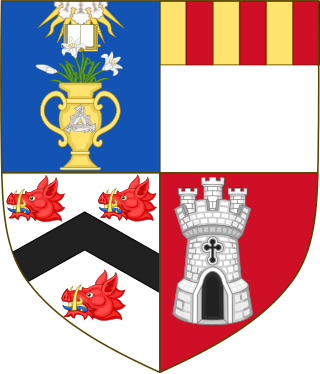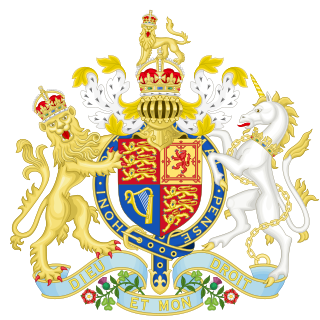
A rector is a senior official in an educational institution, and can refer to an official in either a university or a secondary school. Outside the English-speaking world, the rector is often the most senior official in a university, while in the United States, the most senior official is often referred to as the president, and in the United Kingdom and Commonwealth of Nations, the most senior official is the chancellor, whose office is primarily ceremonial and titular. The term and office of a rector can be referred to as a rectorate. The title is used widely in universities in Europe and is very common in Latin American countries. It is also used in Brunei, Macau, Turkey, Russia, Pakistan, the Philippines, Indonesia, Israel and the Middle East. In the ancient universities of Scotland the office is sometimes referred to as Lord Rector, is the third most senior official, and is usually responsible for chairing the University Court.

The University of Aberdeen is a public research university in Aberdeen, Scotland. It was founded in 1495 when William Elphinstone, Bishop of Aberdeen and Chancellor of Scotland, petitioned Pope Alexander VI on behalf of James IV, King of Scots to establish King's College, making it one of Scotland's four ancient universities and the fifth-oldest university in the English-speaking world. Along with the universities of St Andrews, Glasgow, and Edinburgh, the university was part of the Scottish Enlightenment during the 18th century.
The ancient universities of Scotland are medieval and renaissance universities that continue to exist in the present day. The majority of the ancient universities of the British Isles are located within Scotland, and have a number of distinctive features in common, being governed by a series of measures laid down in the Universities (Scotland) Acts 1858–1966. The Universities (Scotland) Act 1966 uses the term 'older universities' to refer to St Andrews, Glasgow, Aberdeen and Edinburgh. The same act provided for the independence from St Andrews of Dundee, which was then granted a similar form of governance under its royal charter.

The Local Government etc. (Scotland) Act 1994 is an Act of the Parliament of the United Kingdom that created the current local government structure of 32 unitary authorities covering the whole of Scotland.

Marischal College is a large granite building on Broad Street in the centre of Aberdeen in north-east Scotland, and since 2011 has acted as the headquarters of Aberdeen City Council. However, the building was constructed for and is on long-term lease from the University of Aberdeen, which still uses parts of the building to store its museum collections. Today, it provides corporate office space and public access to council services, adjacent to the Town House, the city's historic seat of local government. Many Aberdonians consider Marischal College to be an icon of the "Granite City" and to symbolise the zenith of Aberdeen's granite-working industry.

The (Lord) Rector of the University of Glasgow is one of the most senior posts within the institution, elected every three years by students. The theoretical role of the rector is to represent students to the senior management of the university and raise issues which concern them. In order to achieve this, the rector is the statutory chair of the Court, the governing body of the university.

The Lord Rector of The University of Edinburgh is elected every three years by the students and staff at The University of Edinburgh. Seldom referred to as Lord Rector, the incumbent is more commonly known just as the Rector.
The Lord Chancellor of Scotland, formally the Lord High Chancellor, was a Great Officer of State in the Kingdom of Scotland.
The Lord Rector of the University of St Andrews is the president of the University Court of the University of St Andrews; the University Court is the supreme governing body of the University.
James Bane was Bishop of St. Andrews for a brief period in the early 14th century. In his earlier career, James had been a canon of Aberdeen and prebendary of Cruden.

The rector of the University of Dundee is elected by the matriculated students of the University of Dundee. From 1967 to 2010, the rector was automatically a full member of the University Court. The rector also had the right to appoint an assessor, who was also a full member of the University Court. Following changes made to the university charter in August 2010, the rector must choose to take up full membership of the University Court or appoint an assessor who has full voting rights.

The 2011 Scottish Parliament election was held on Thursday, 5 May 2011 to elect 129 members to the Scottish Parliament.

Francis Mulholland, Lord Mulholland, is a Scottish judge who has been a Senator of the College of Justice since 2016. He previously served from 2011 to 2016 as Lord Advocate, one of the Great Officers of State of Scotland and the country's chief Law Officer, and as Solicitor General, the junior Law Officer.
The Lord Rector of the University of Aberdeen is the students' representative and chairperson in the University Court of the University of Aberdeen. The position is rarely known by its full title and most often referred to simply as "Rector". The rector is elected by students of the university and serves a three-year term. Although the position has existed since 1495, it was only officially made the students' representative in 1860.
The ancient university governance structure in Scotland is the organisational system imposed by a series of Acts of Parliament called the Universities (Scotland) Acts 1858 to 1966. The Acts applied to what were termed the 'older universities': the University of St Andrews, the University of Glasgow, the University of Aberdeen and the University of Edinburgh. Together these four universities are commonly referred to as the ancient universities of Scotland. Whilst the Acts do not directly apply to the University of Dundee, the same governance structure was ordained for use by that institution in its royal charter.

Undergraduate gowns are a notable feature of academic dress for students at the ancient universities in Scotland.
Walter Forrester, bishop of Brechin, was an administrator and prelate in later medieval Scotland. Originating in Angus, he came from a family of English origin who by the end of the 14th century had become well established in Scottish society. A student of the University of Paris and University of Orleans, he began his career at home by the later 1370s.
The 1910–11 Scottish Districts season is a record of all the rugby union matches for Scotland's district teams.










